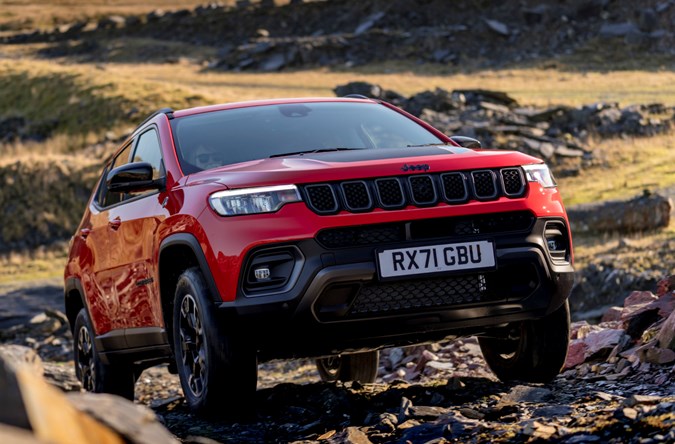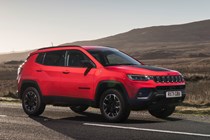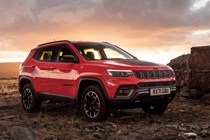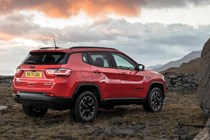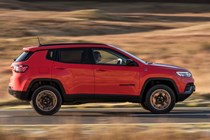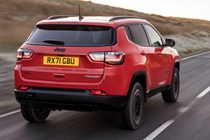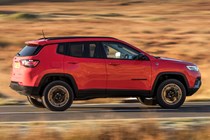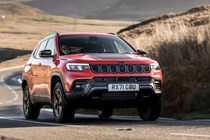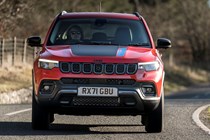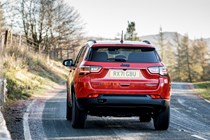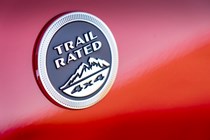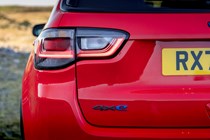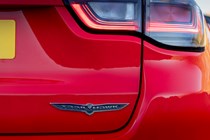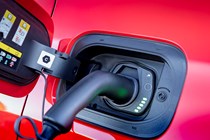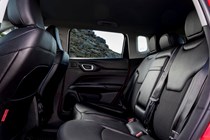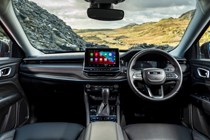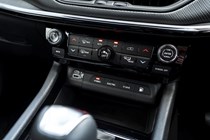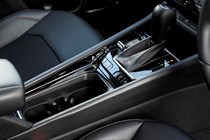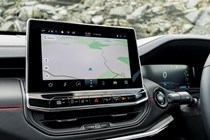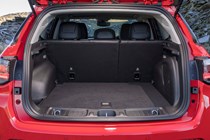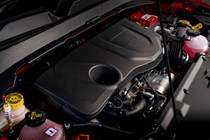Jeep Compass engines, drive and performance
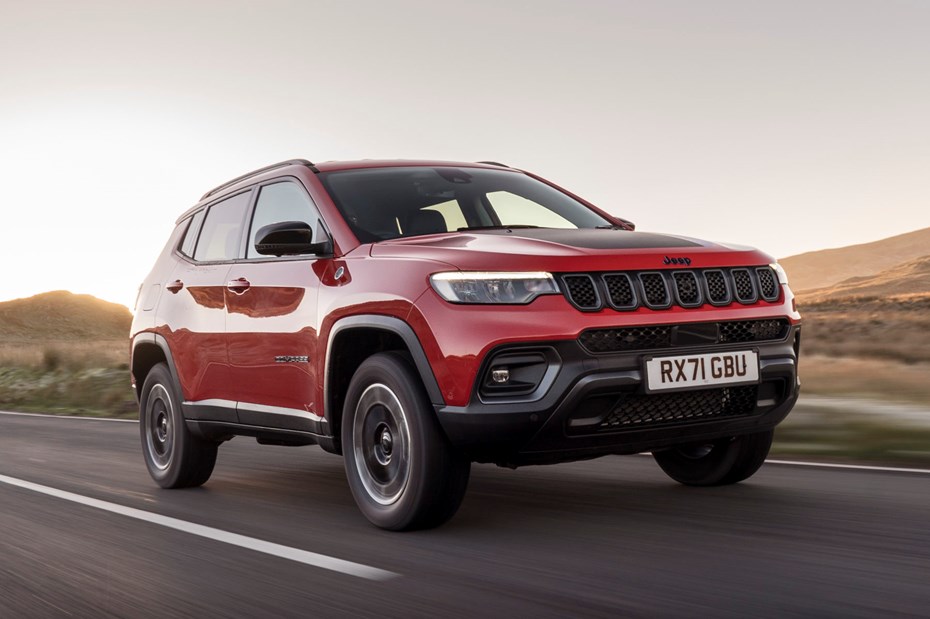
- Two hybrid engines
- One petrol option
- No diesel
4xe plug-in hybrid
The plug-in hybrid is a mixed bag. Despite 240hp and a 0-62mph time of 7.3 seconds it never feels that quick.
When it’s pootling along in electric mode it feels sweet and well-judged. Easy-going and relaxing.
However the switch between petrol and electric is noisy and unsubtle. And the petrol engine can make itself heard under hard acceleration.
It is reassuringly simple to switch between modes. There are three buttons below the heating controls. Hybrid let’s the car do the thinking. It switches between electric and petrol depending on the situation.
Electric locks it into electric-only, although the petrol engine can be roused into life by pressing the accelerator all the way down.
Finally there’s e-save. This tells the car not to use any of the electric power. This is good if you know you’re driving into a built-up area and would prefer not to produce any local emissions.
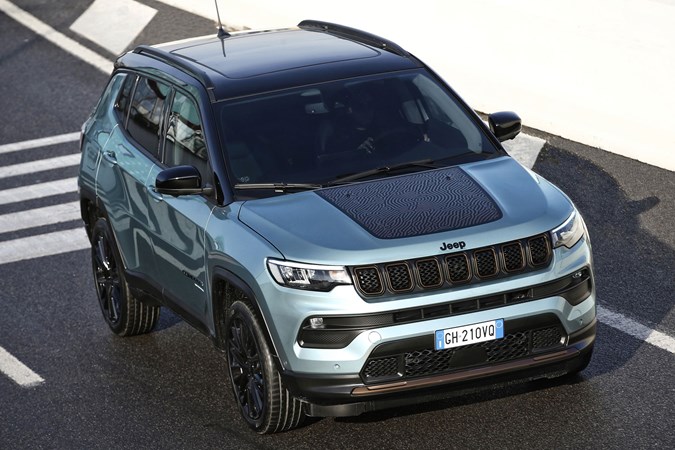
Petrol engines
There’s a choice of two petrol engines for the Compass – either a 1.3-litre petrol or a 1.5-litre full hybrid (which carries an e-Hybrid badge). Both produce 130hp, but the e-Hybrid has lower torque, better fuel economy and lower emissions, as well as the convenience of a seven-speed automatic.
The 1.3-litre is a surprisingly capable engine for the size of car. Quiet and eager, it isn’t about to overtake everyone on the road but is more than adequate for A-roads and motorways as well as slower routes. The six-speed gearbox allows smooth, quick changes and makes the most of the 270Nm torque on offer.
Refinement is mostly good, yet the Compass’ wheel and tyre combination in the Night Eagle we tested generated a remarkable amount of road noise over 45mph spoiling an otherwise impressive performance for a family SUV at this price.
The e-Hybrid model is easier to drive thanks to its automatic gearbox – and it’s quiet around town because the electric motor is powerful enough to propel the car by itself at low speeds. However, it suffers from the same problem as the PHEV model, with the changeover from electric to hybrid mode being quite jarring.
The gearbox can also be a little slow to respond. Say you’re trying to exploit a gap at a junction, and you need to accelerate hard to get ahead of traffic – it can be two seconds before the gearbox responds if the car is in EV mode, by which point the gap has vanished and you’ll need to wait.
What’s it like to drive?
- Easy to drive
- Quite loud
- Light steering
Plug-in hybrid charging complexities aside, the Compass is easy to live with. The steering is very light and the ride is soft around town. The car’s ample suspension travel makes light work of pot holes and speed bumps – and the same qualities remain for the petrol and e-Hybrid variants. However, both feel slightly more agile thanks to their lower weights.
We’ve tested the Trailhawk version, which has mud/snow tyres. We found it noisy at motorway speeds, with a little bit of fidget being sent from the road through the seat. It may not be unique to the 4xe though – the Night Eagle with 1.3-litre produces a lot of road noise as well, despite being front-wheel drive.
The automatic gearbox of the 4xe is sharp and rarely caught out. There’s a Sport mode that makes the gearbox ultra alert and keen to stay in gear. We’d avoid it.
Off-road
Only the 4xe PHEV has four-wheel drive. And you’ll need to have a charged battery to make use of it, because that’s how power is sent to the rear wheels.
The Compass excels off-road. There’s certainly enough tech and suspension travel to tackle snowy roads if you took it skiing. We ventured onto an off-road course and our instructor said it was as competent as something like a Toyota Hilux.
